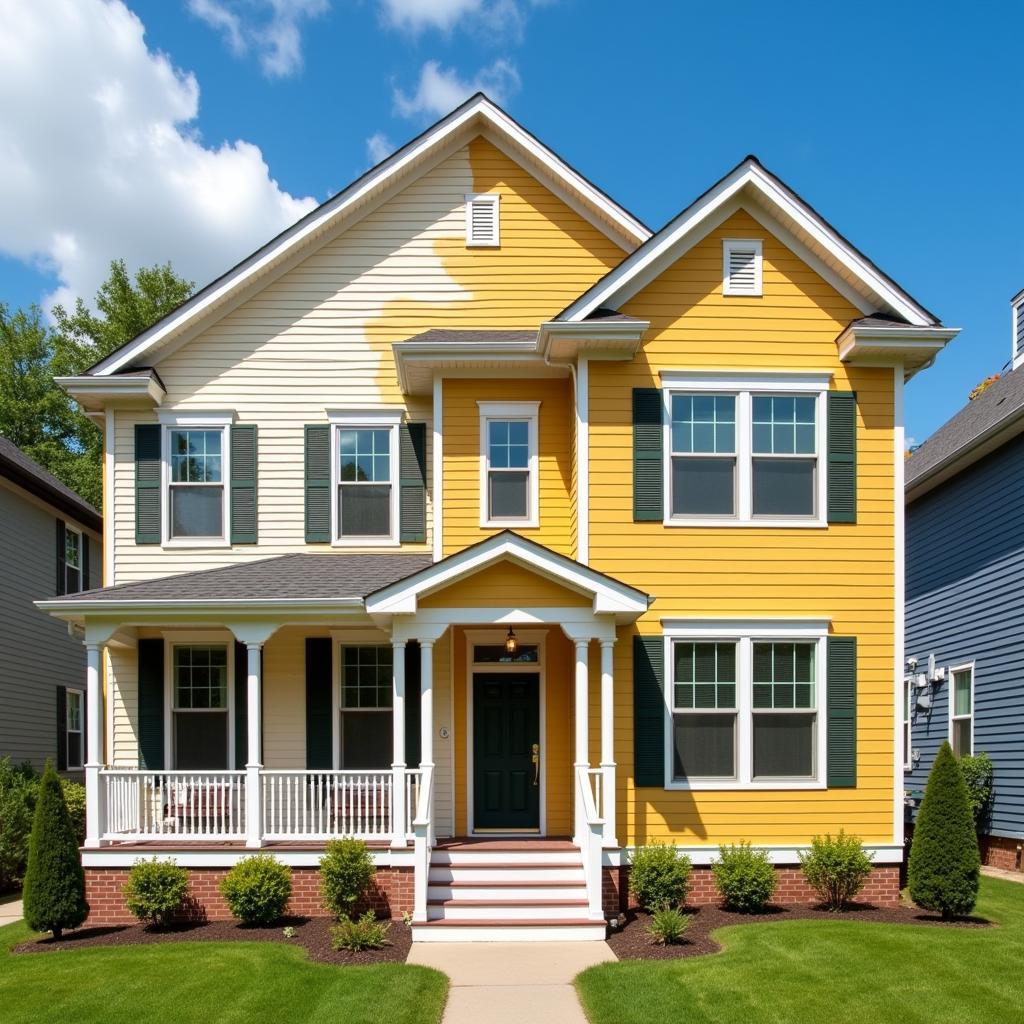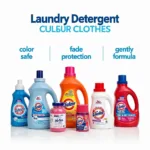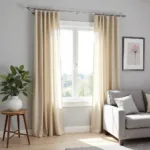Paint color can indeed change over time, and understanding why is key to maintaining a vibrant and long-lasting finish in your home. Several factors contribute to this gradual shift in color, from environmental elements like sunlight and humidity to the inherent properties of the paint itself. Knowing what causes these changes can help you make informed decisions about paint choices and protective measures.
As a color expert and design enthusiast from Color Box Hanoi, I’m passionate about helping you create the perfect living space. Choosing the right paint and understanding how to maintain its brilliance is crucial. So let’s delve into the science behind color change and explore how you can keep your walls looking their best. If you’re looking to change the color of your wood furniture, we have some great tips for you!
What Causes Paint to Fade or Change Color?
Several factors can lead to paint color changing over time. The most common culprits are:
- Sunlight (UV Radiation): Prolonged exposure to sunlight is the primary cause of paint fading. UV rays break down the chemical bonds in the paint pigments, causing the color to gradually lose its intensity. This is especially noticeable with brighter, more vibrant colors.
- Moisture and Humidity: High humidity levels can cause paint to absorb moisture, leading to discoloration, mildew growth, and even peeling. This is more common in areas like bathrooms and kitchens.
- Temperature Fluctuations: Extreme temperature changes can cause paint to expand and contract, leading to cracking and fading.
- Poor Quality Paint: Lower quality paints often contain less pigment and binder, making them more susceptible to fading and discoloration.
- Environmental Pollutants: Airborne pollutants, such as smoke, dust, and chemicals, can adhere to the paint surface and cause discoloration.
- Oxidation: Certain types of paint, particularly oil-based paints, can oxidize over time, causing a yellowish tint to develop.
How to Minimize Paint Color Change
While some color change is inevitable, there are several steps you can take to minimize it:
- Choose High-Quality Paint: Investing in high-quality paint with superior UV protection and fade resistance is crucial. These paints contain higher concentrations of pigments and binders, making them more durable and less likely to fade.
- Apply a Primer: Applying a primer before painting can create a more uniform surface for the paint to adhere to and can enhance color retention.
- Consider the Location: When choosing paint colors, consider the amount of sunlight the area receives. Opt for lighter colors in sun-drenched rooms, as they tend to fade less noticeably.
- Control Humidity and Ventilation: Proper ventilation, especially in bathrooms and kitchens, can help prevent moisture buildup and minimize discoloration. Consider using a dehumidifier in particularly humid areas.
- Regular Cleaning: Regularly cleaning your painted walls with a gentle cleanser can help remove dirt and pollutants that can contribute to discoloration.
 Paint Fading Over Time on an Exterior Wall
Paint Fading Over Time on an Exterior Wall
How to Restore Faded Paint
If your paint has already faded, there are a few options for restoring its color:
- Repainting: Repainting is often the most effective solution for restoring faded paint. Choose a high-quality paint with UV protection for optimal results.
- Touch-Ups: For smaller areas of fading, touch-ups can be a quick fix. Ensure you use the same paint color and sheen as the original coat.
- Color Matching: If you don’t have any leftover paint, try to color-match the existing paint as closely as possible. Take a small sample to a paint store for professional matching.
Does Interior Paint Fade?
Yes, interior paint can also fade, although typically at a slower rate than exterior paint. Interior fading is often caused by factors like artificial light, temperature fluctuations, and household cleaners. Knowing what colors does mulch come in can be helpful if you are trying to coordinate your home’s exterior.
How Long Does it Take for Paint to Fade?
The rate at which paint fades varies depending on several factors, including the quality of the paint, the amount of sunlight exposure, and environmental conditions. Generally, exterior paint can begin to show signs of fading within 5-10 years, while interior paint may last longer. You might also be interested in learning how to change wood color to refresh your interior.
How Can I Tell if My Paint Has Faded?
Comparing a recently painted area to an older section can help you determine if your paint has faded. You can also compare the current color to the original paint chip or a photo taken shortly after painting. Knowing what color Santa’s sleigh is could help in your design endeavors.
Conclusion
Does paint color change over time? Absolutely. Understanding the factors that contribute to this change and taking preventative measures can help you maintain the vibrancy and beauty of your painted surfaces for years to come. By choosing high-quality paints, considering environmental factors, and following proper maintenance procedures, you can keep your walls looking their best. If you’re curious about team colors, you might want to check out what are the Patriots colors. Another thing to consider is what is the easiest car color to keep clean.
FAQ
- What type of paint fades the least? High-quality acrylic paints with UV protection generally offer the best fade resistance.
- How can I protect my exterior paint from fading? Choose a paint with UV protection, apply a primer, and consider the amount of sunlight exposure.
- Does cleaning my walls help prevent fading? Yes, regular cleaning can remove dirt and pollutants that contribute to discoloration.
- Can I restore faded paint without repainting? Touch-ups or color matching can be effective for smaller areas.
- How often should I repaint my house? Depending on the climate and paint quality, repainting every 5-10 years is generally recommended.
- Can artificial light cause paint to fade? Yes, although typically at a slower rate than sunlight.
- How can humidity affect my paint? High humidity can lead to discoloration, mildew growth, and peeling.
Need help with your next painting project? Contact us at 0373298888, email [email protected], or visit us at 86 Cầu Giấy, Hanoi. Our team is available 24/7.

